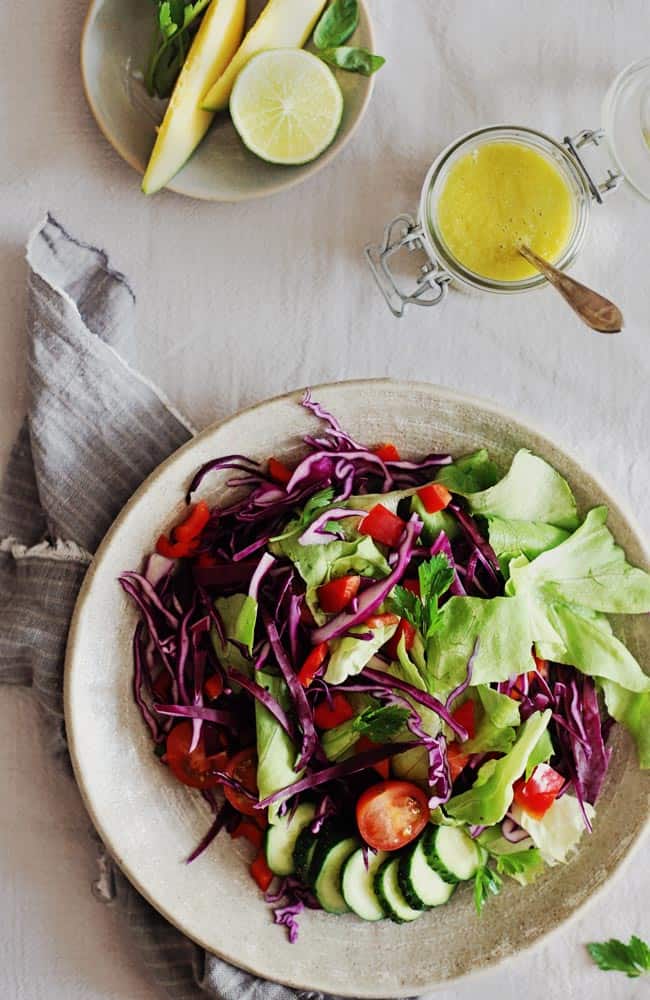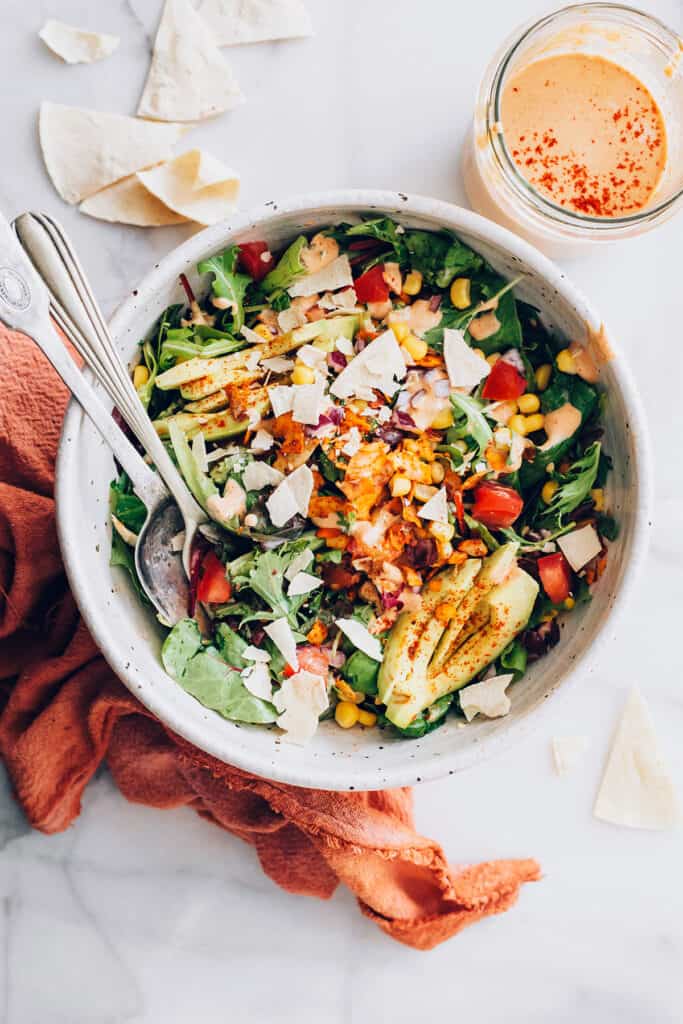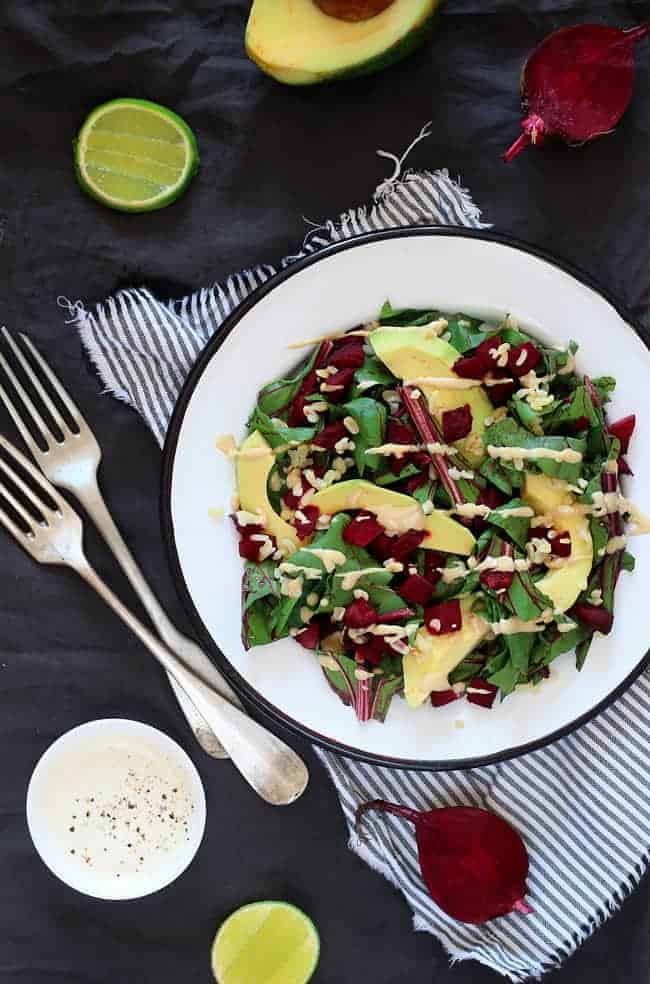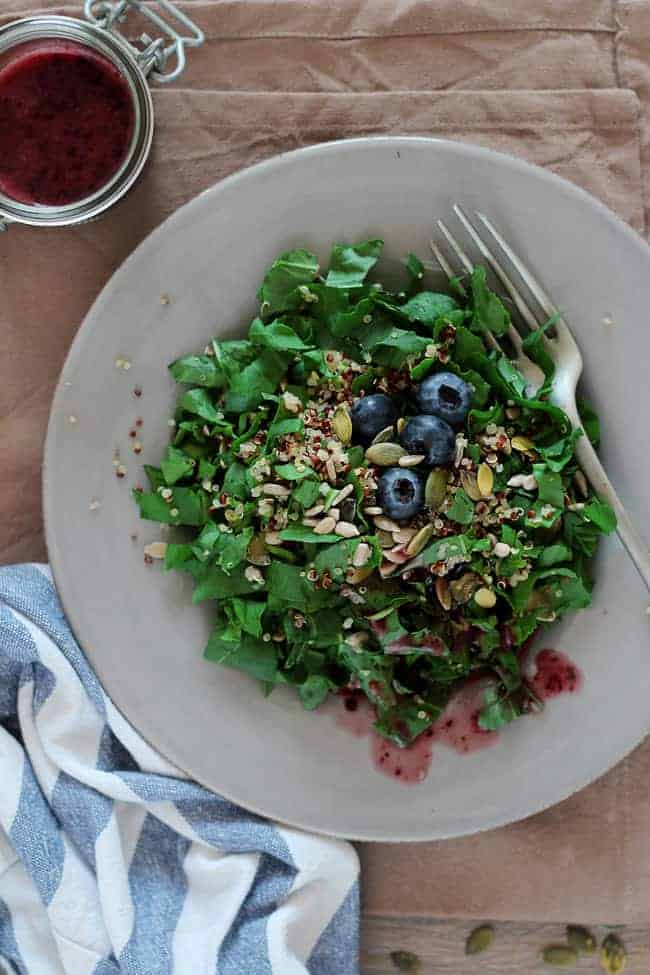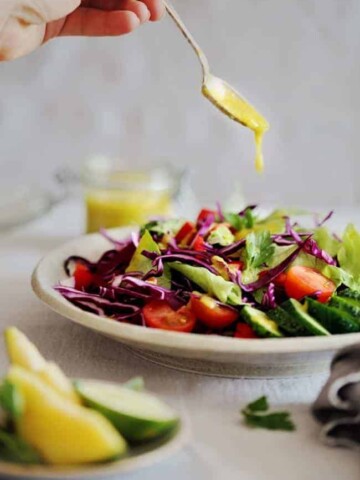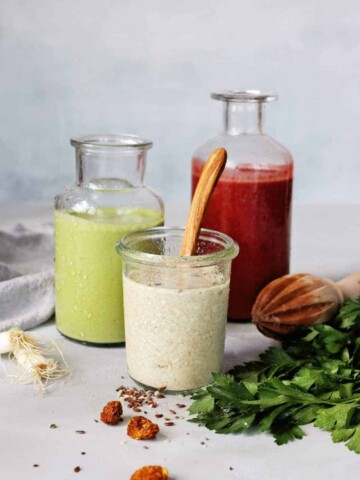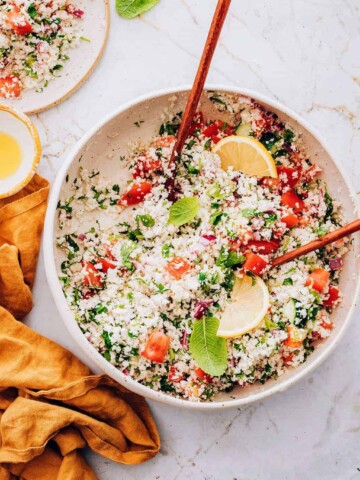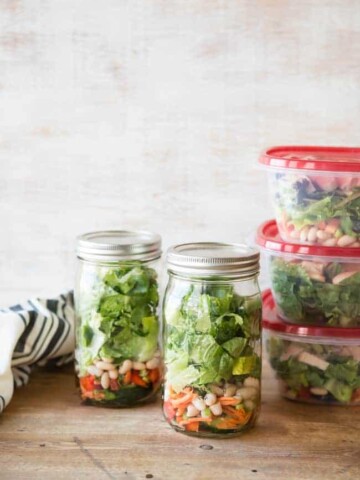Does your heart sink a little when you think about eating salad for lunch or dinner? Well, we need to fix that. It's totally possible to create a hearty, satisfying salad that doesn't taste like rabbit food—and does taste like something you'll actually want to eat every day.
To make a great salad, I start with a mix of dark leafy greens such as baby spinach and kale, and add in some iceberg lettuce and romaine for a nice crunch. Cut some fresh veggies, like bell peppers and green beans, into bite-sized pieces and add them to the mix. To add some creaminess, crumble some goat cheese or feta cheese on top.
If you want some extra protein, toss in some hard-boiled eggs. For some added sweetness, sprinkle in some fresh or dried fruit, like cranberries or apples. To give your salad some crunch and healthy fats, add some sunflower seeds or chopped nuts.
Finally, whip up a simple dressing using red wine or balsamic vinegar, olive oil, a touch of maple syrup, and a pinch of salt and pepper. Toss everything together and enjoy your delicious and healthy salad!
Of course, anyone can make a great tasting salad by following our simple tips!
5 essential tips for making the perfect salad
1. Be creative
First, it's important to rethink your definition of "salad." One of the reasons salad gets such a bad rap is it tends to presented in the boring lettuce + more veggies + dressing (and maybe some croutons) format.
You can make salads every day of the week and never buy a head of lettuce if you don't want to. Some leafiness is a nice base, but you can get that from pea shoots or any number of other greens.
2. Contrasting Textures
This is key to enjoying your salad! Only have crunchy veggies on hand? Make a chopped salad and top it with beans, chicken or avocado for textural variety.
If you've found yourself with more greens than you can deal with, add in some roasted chickpeas, croutons, celery, sprouts, berries or hard-boiled eggs for variation.
 3. Fiber + Protein
3. Fiber + Protein
If texture is the key to enjoying your salad, soluble fiber and protein are the key to staying full after you eat it. Some veggies, like carrots and cucumbers, have a lot of soluble fiber to keep you full, and some (like spinach and peas) have protein.
But adding other soluble fiber and protein sources can transform salad from side to main dish. Insoluble fiber won't keep you full, but is necessary for gut health and digestion. You can get insoluble fiber from whole grains, zucchini, broccoli, dark leafy greens and fruit.
4. Salads Don't Have to Be Raw
Just like there's no rule that everything in your salad has to be a veggie, there's no rule that everything has to be raw. Use raw, steamed or sautéed greens—or even grilled romaine lettuce—as a base, then pile it on. (By the way, this is where leftovers really come in handy.)
Here are just a few ideas to start:
- pickled beets or carrots
- grilled veggies or meats
- charred corn or tomatoes
- marinated mushrooms
- roasted broccoli or cauliflower
- grilled halloumi cheese
- zucchini, kale or radish chips
- mashed root veggies
- bacon or veggie bacon
- caramelized onions
- blanched green beans
- leftover stir-fry or kebabs
- rice, quinoa or other grains
- seared tuna
- baked salmon
- roasted nuts and seeds
- rotisserie chicken
- baked chickpeas
- refried beans
- baked tofu or tempeh
- over-easy or hard-boiled eggs
5. Don't Forget the Dressing
For some, bottled dressing will do the trick. (Personally, I'm a huge fan of tahini-based Annie's Goddess dressing and Brianna's Zesty French, which has a nice paprika flavor.)
However, salad dressings, like all condiments, tend to contain a lot of sodium, hidden sugars, preservatives and oils that we'd maybe rather not consume all the time.
This is why homemade salad dressings are a genius option. If olive oil and lemon juice sounds totally boring, try making homemade ranch, blue cheese, French or honey mustard, or experiment with a simple ratio of 1 part vinegar to 3 parts oil (to taste) with minced shallots, herbs, spices, mustard, tahini or other accoutrements whisked in. Shake it all up in a mason jar and there's no need to buy dressing.
How to Make the Perfect Salad
Follow this formula to make salads you'll want to eat every day:
 8 of our favorite salad posts to get you started:
8 of our favorite salad posts to get you started:
25 Mason Jar Salads Almost Too Pretty To Eat
How to Pack a Week’s Worth of Make-Ahead Salads (+ 5 Recipes to Get You Started!)
Hydrating Romaine Salad with Mango-Basil Dressing
Southwest BLT Salad with Zesty Lime Dressing
Glowing Skin Salad with Detox Dressing
Beet Greens and Avocado with Creamy Tahini Dressing
Watercress and Quinoa Salad with Blueberry Vinaigrette
Sweet and Spicy Sriracha Chicken Salad
Quickfire Healthy Salad Dressing Recipes
Looking for a healthy dressing for those amazing salads? Try these!
Lemon Vinaigrette: You will need ¼ cup fresh juice, ½ cup olive oil, 1 minced garlic clove, 1 teaspoon honey, and salt and pepper to taste. Whisk all ingredients together until they are emulsified.
Lemon-Tahini Dressing: You will need ¼ cup tahini, ¼ cup fresh juice, 1 minced garlic clove, ¼ cup water, and salt and pepper to taste. Whisk all ingredients together until the mixture is smooth.
Lemon-Ginger Dressing: You will need ¼ cup fresh juice, ¼ cup olive oil, 1 tablespoon grated fresh ginger, 1 minced garlic clove, 1 teaspoon honey, and salt and pepper to taste. Whisk all ingredients together.
Lemon-Poppy Seed Dressing: You will need ¼ cup fresh juice, ½ cup olive oil, 1 tablespoon honey, 1 tablespoon poppy seeds, and salt and pepper to taste. Whisk all ingredients and serve.
Lemon-Mustard Dressing: You will need ¼ cup fresh juice, ¼ cup olive oil, 1 tablespoon Dijon mustard, 1 minced garlic clove, and salt and pepper to taste. Whisk all ingredients together until they are emulsified.
631

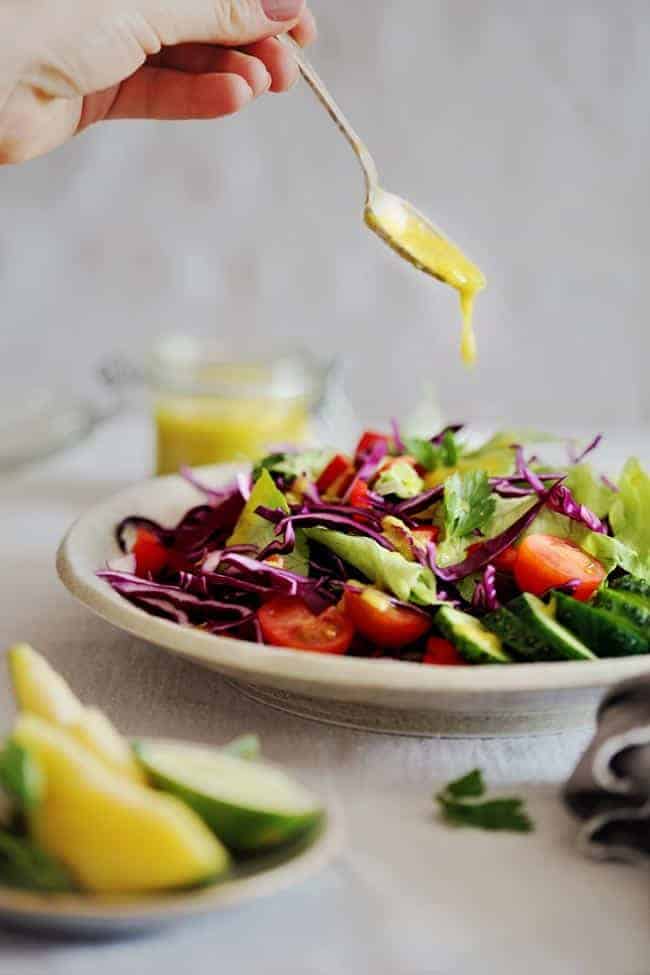 3. Fiber + Protein
3. Fiber + Protein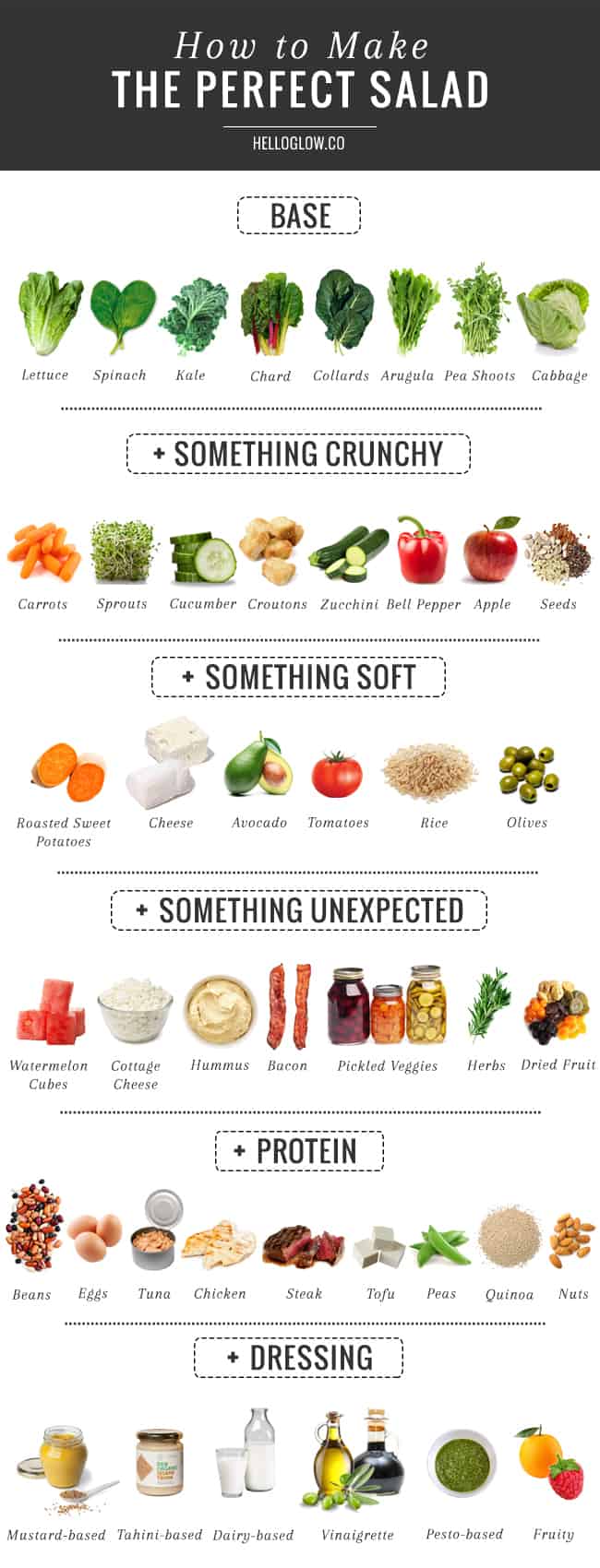 8 of our favorite salad posts to get you started:
8 of our favorite salad posts to get you started:

